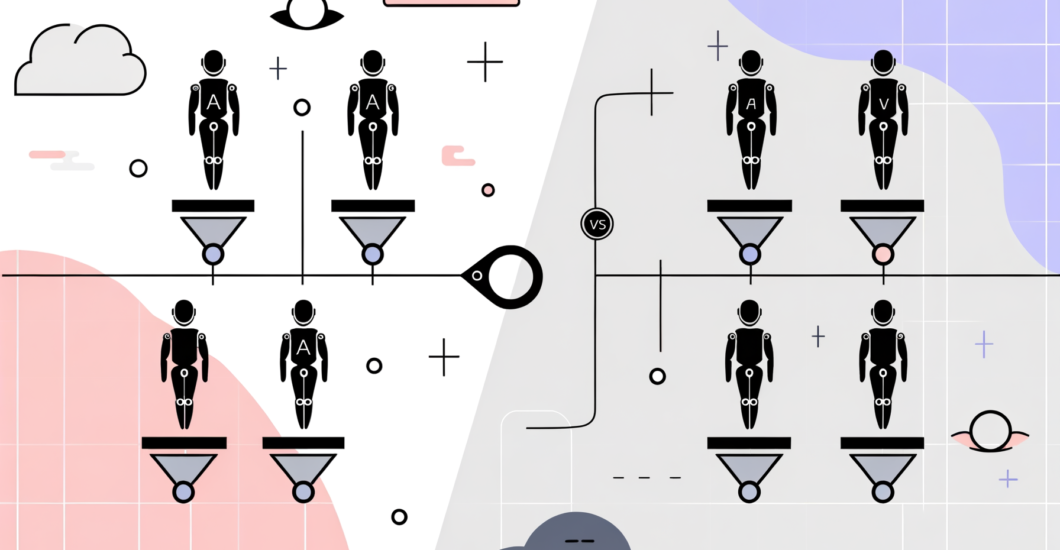The landscape of automation is evolving at a breakneck pace, with technologies emerging that challenge the very definition of efficiency and productivity. At the forefront of this revolution are AI agents and traditional automation systems, both vying for supremacy in the realms of work, data processing, and business intelligence. But how do these two approaches stack up against one another? While traditional automation has long been a staple in streamlining business operations, AI agents bring a new level of adaptability and intelligence that can dramatically enhance performance. In this exploration, we’ll dissect the capabilities, limitations, and potential of each, helping you to understand which might better suit your needs in today’s fast-paced digital landscape.
Understanding Traditional Automation
Traditional automation has been the cornerstone of manufacturing and business processes for decades. This approach relies on established rules and pre-programmed instructions to execute repetitive tasks, whether it’s a robotic arm assembling widgets on a production line or simple scripts managing data entry in an office environment. Advantages of traditional automation include its reliability and ease of implementation. Companies can expect predictable outcomes, lower operational costs, and minimal downtime when the systems are functioning as intended. However, this rigidity is also a major drawback; traditional automation lacks the flexibility to adapt to unexpected scenarios or complex decision-making processes.
The Rise of AI Agents
As technology progressed, the limitations of traditional automation led to the advent of AI agents, systems designed to mimic human intelligence and decision-making processes. These agents utilize machine learning, natural language processing, and advanced data analytics to not only automate tasks but to improve and adapt over time. The adaptive nature of AI agents allows them to learn from their interactions, meaning they can handle increasingly complex tasks that traditional systems simply can’t manage. For instance, an AI agent can analyze customer interactions, predict needs, and personalize responses, effectively acting as a digital assistant. This capability isn’t just about performing tasks; it’s about enhancing the overall customer experience, significantly boosting engagement and satisfaction.
Comparative Efficiency: Time and Cost
When evaluating efficiency, traditional automation often shines in well-defined processes where time and cost savings are straightforward. However, AI agents can offer greater long-term efficiency gains due to their ability to continuously improve. Consider this comparison:
- Initial Cost: Traditional automation usually requires a higher upfront investment in hardware and programming.
- Long-term Savings: AI agents may have lower initial costs by leveraging existing infrastructure and requiring less manual intervention over time.
- Flexibility: AI agents provide greater adaptability to changing business needs without the need for significant reprogramming.
Thus, while traditional automation may seem cost-effective in the short term, the scalability and adaptability of AI agents often lead to reduced costs and expanded capabilities in the long run.
Impact on Workforce Dynamics
The integration of AI agents also brings significant implications for workforce dynamics. Traditional automation, often seen as a threat to jobs due to its propensity to replace manual tasks, has caused considerable anxiety among workers. However, AI agents tend to reshape job roles rather than eliminate them. They enhance human capabilities by offloading repetitive tasks, allowing employees to focus on more strategic initiatives. This partnership fosters a more intellectually stimulating work environment, promoting innovation and creativity. As companies adjust to this hybrid workforce, the challenge lies in retraining employees to work alongside AI rather than compete against it.
Choosing Between the Two
So, which approach should businesses adopt? The answer often depends on the specific processes and needs of each organization. For tasks that are highly predictable and repetitive, traditional automation remains a robust solution. Conversely, businesses seeking to elevate their operations through adaptability and enhanced user interactions may find AI agents to be the superior choice. Ultimately, the decision should consider:
- Nature of the tasks: Are they routine or complex?
- Future scalability: Is the business anticipating growth and varying demands?
- Employee dynamics: How will this technology affect the workforce?
Understanding these facets will empower businesses to make informed decisions that align technology strategies with their overall goals.
In conclusion, the debate between AI agents and traditional automation is more nuanced than a simple win or lose scenario. Each has distinct advantages that make it suitable for different contexts. Traditional automation excels in streamlining routine tasks with known parameters, while AI agents offer adaptability and intelligent processing for complex situations. As technology continues to advance, businesses must critically analyze their unique needs and the transformative potential of each approach. Embracing the right type of automation could be the key to achieving unprecedented efficiency and innovation in the years to come.


